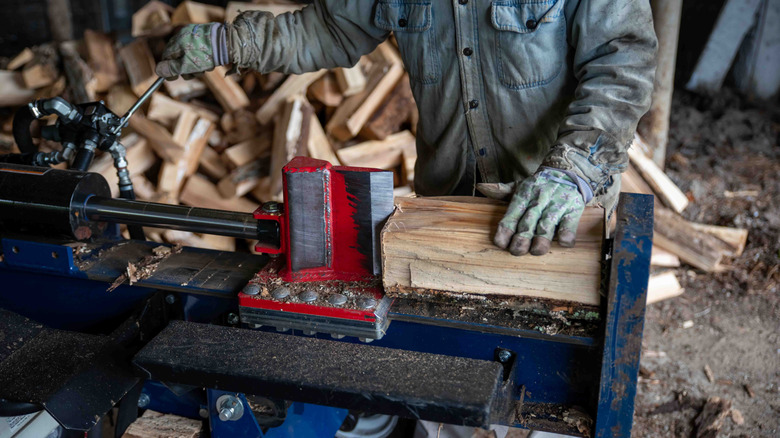Why Your Log Splitter Is Leaking And How To Fix It
Having plenty of lumber is imperative throughout the year, whether you're stocking your fireplace for a snowy winter or creating a safe fire pit during the summer. If you're trying to season wood to burn in your home, particularly, you'll want to split it first. Wood-splitting maul axes have been utilized for centuries, but modern conveniences like log splitters make the task easier for everyone, regardless of how able-bodied they might be. That being said, after enough operation, you may find your hydraulic-powered splitter starting to leak.
Hydraulic motors come in four varieties — single piston, double piston, rotary piston, and V-type. These all use pressurized fluids to operate equipment, and they can therefore be dangerous if the motor is improperly set or in some way damaged. Contacting the manufacturer is one way to address concerns, but you can also diagnose and fix many problems with these hydraulics yourself.
The first step toward diagnosing your log splitter's malfunction is knowing what kind of device you own. There are three overarching kinds of log splitters: manual, which uses only human hands to operate; kinetic, which typically uses electric motors to store energy for a ramming ax; or hydraulic. Certain kinetic motors might suffer from fixable oil leaks, but hydraulics have the most problematic potential. From here, your first step is identifying the source of your log splitter leak – something you accomplish by cleaning its motor with a white spirit solvent, and then letting the machine run as you wipe it down with a towel. While doing so, be sure to check the device's seals in particular.
Taking apart your log splitter to fix a leak
Once your leak has been isolated, you can remove the hydraulic motor by unbolting its main cylinder container from the splitter and propping that up on a wooden block. Then, hammer back the gland at the front of the motor (using non-metal tools to ensure you aren't damaging the pump shaft) to expose the clasp around its edge, which you can remove using a chisel. Running the hydraulics at a low speed can help push the motor free from its casing, and from there you can assess which parts need to be replaced or, in the case of loose pieces, properly affixed.
Some of these repair parts might be cheap to come by, with hydraulic pump seals going for around $20 on Amazon. While transporting or working on the motor, keep it wrapped in something like a towel to protect it from any further damage.
In many cases, the issues with your log splitter might not be something you can manually fix. Multiple brands of log splitters including Country Tuff, Speeco, YTL, and Longli faced recalls in 2021 and 2024 for both the United States and Canada, related to their hydraulic engine motors. Look for your device online through services like the Consumer Product Safety Commission to learn more. Most importantly, keep in mind that any piece of heavy machinery can pose risk of injury, especially when it's being taken apart, so conduct your log splitter fixes with an abundance of caution.
